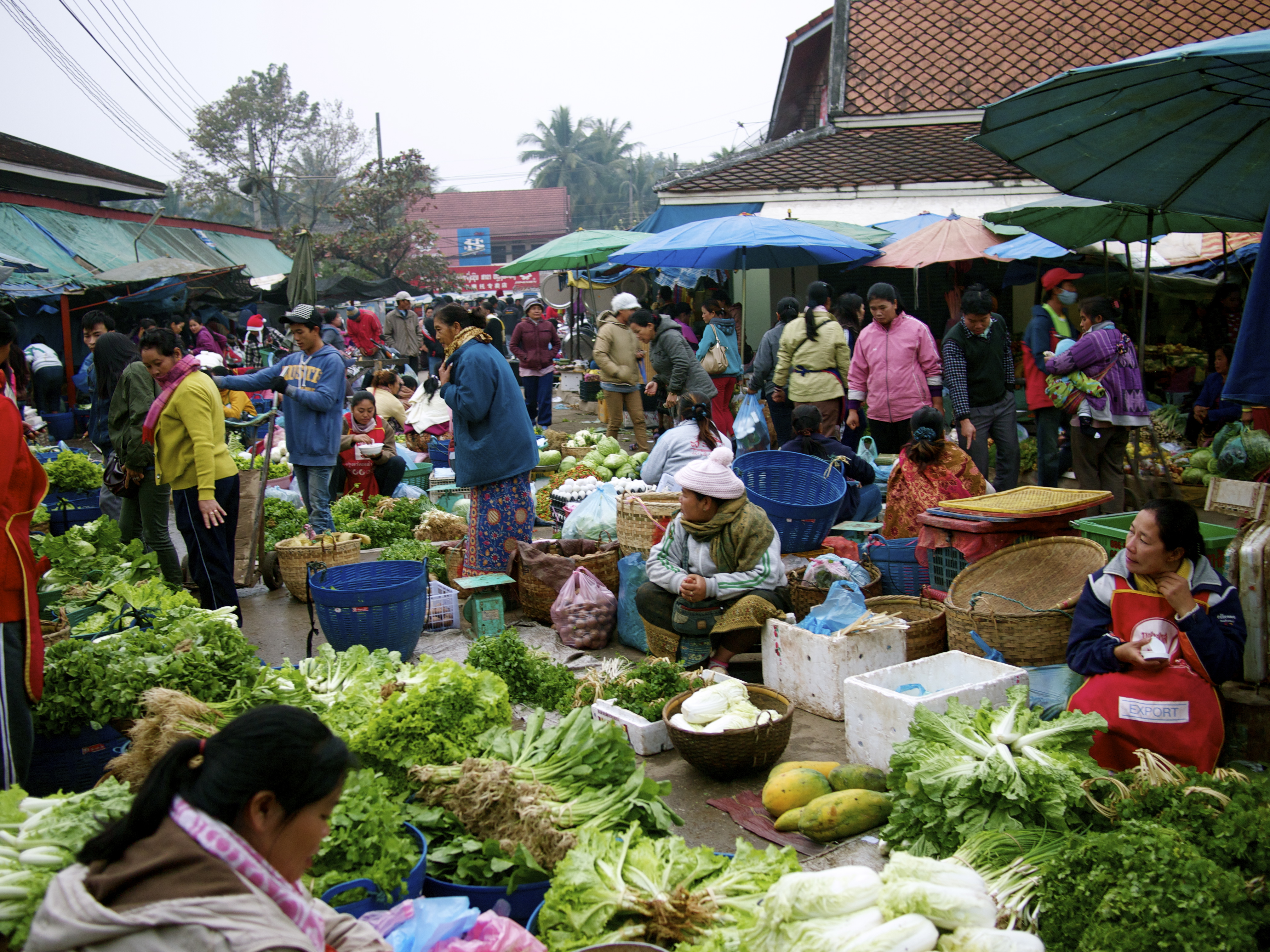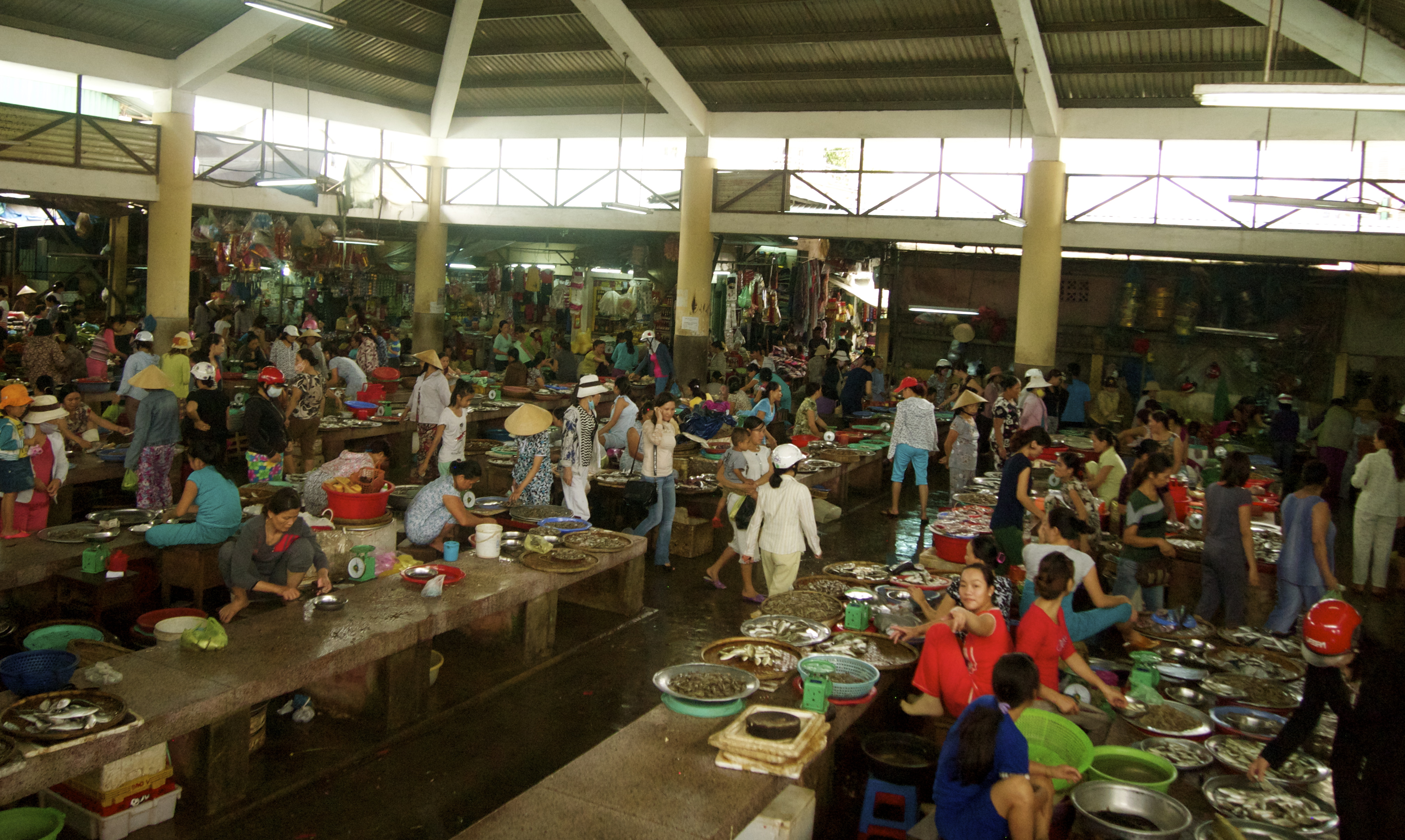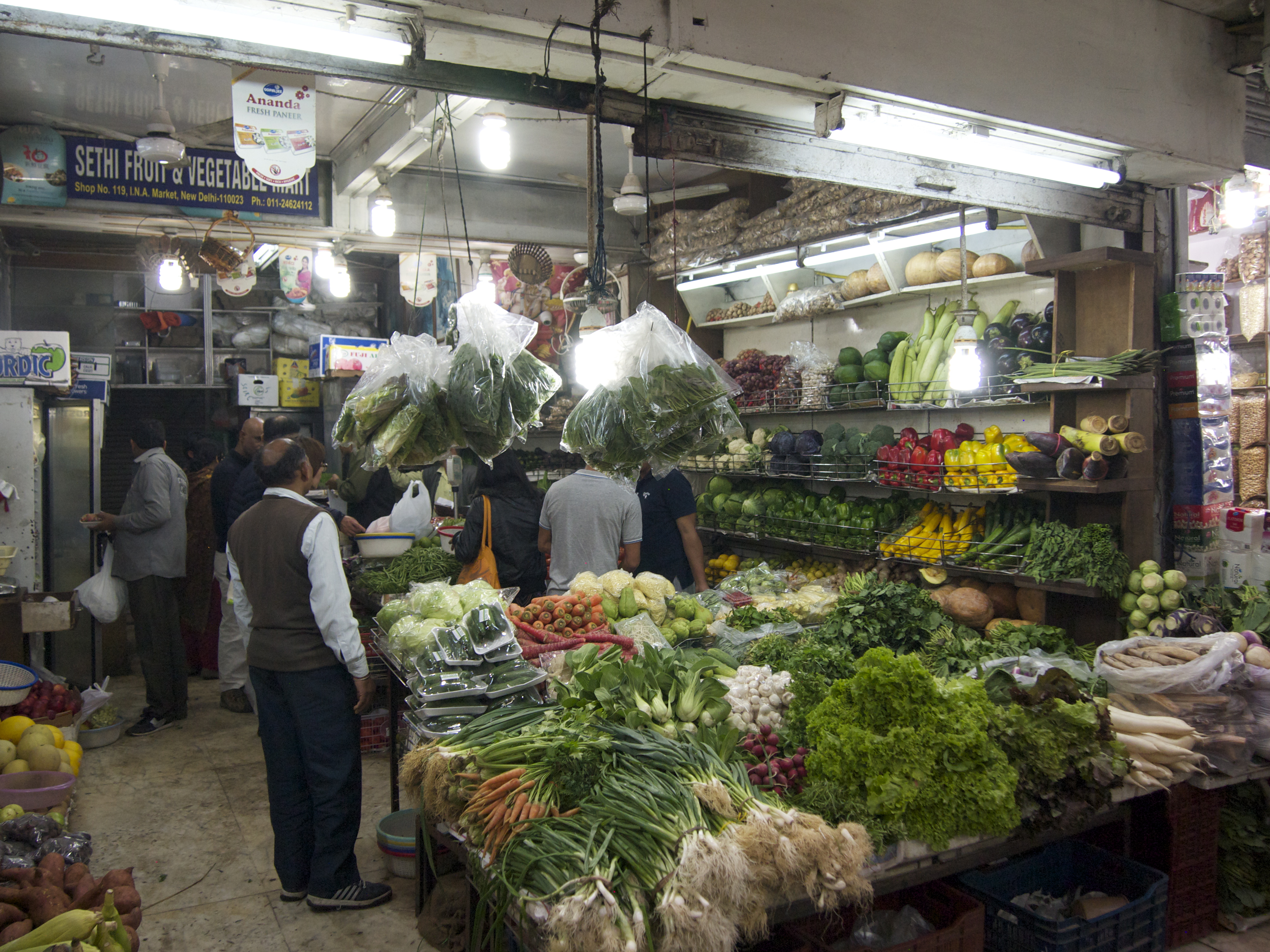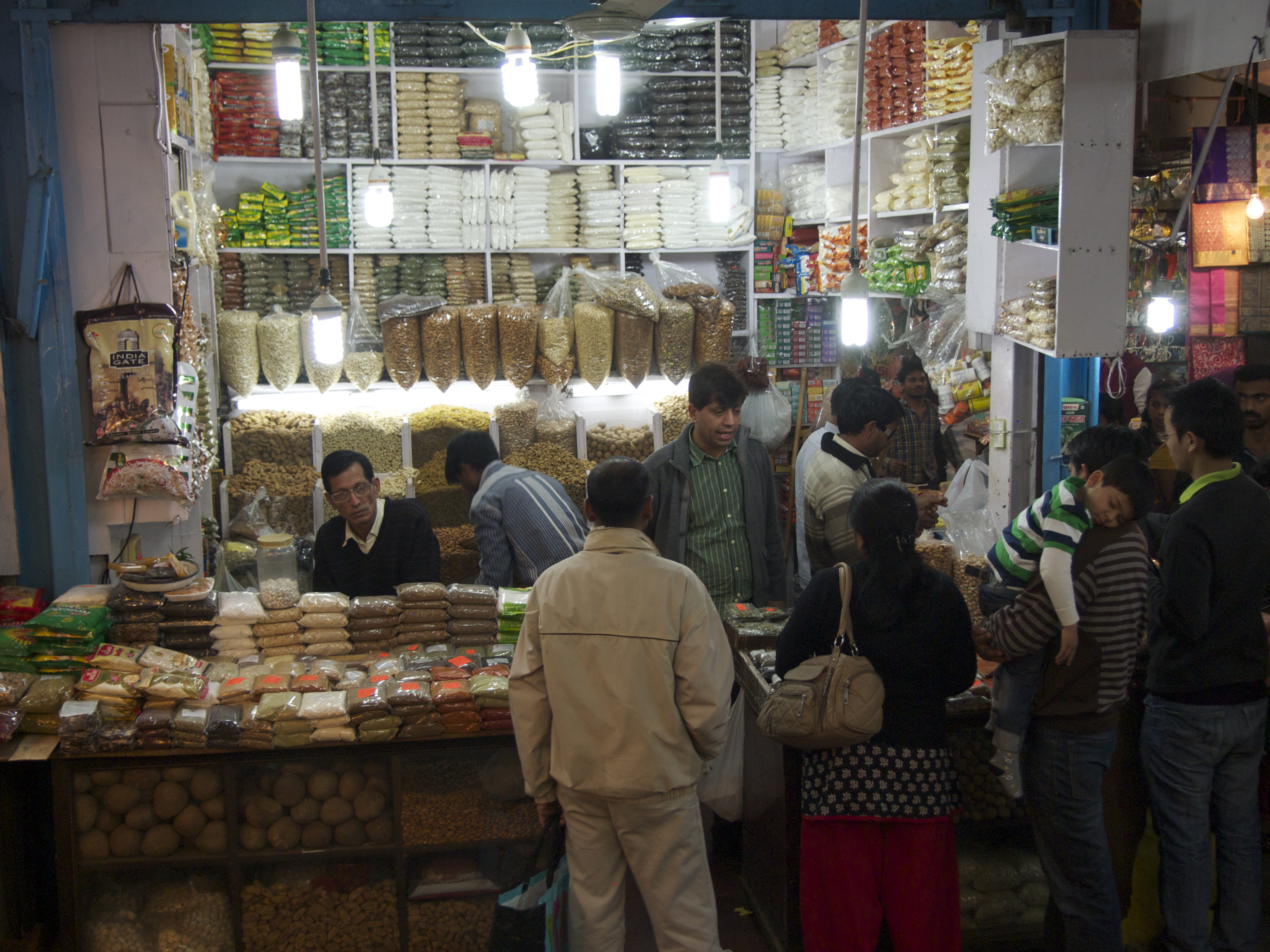All throughout Asia you can find wet markets of varying sizes. The ones that I have visited definitely do not look or feel the same as the farmer’s markets that I would frequent weekly in Canada. But, just as in Ottawa or Toronto, they are wonderful meeting places for neighbours to congregate daily to pick up fresh from the farm produce, a quick bite to eat, or to discuss the latest news or gossip. For the short or long term visitor they offer a fantastic social and cultural entry point in discovering how the local community functions.
Typically a wet market is a partially covered market, of basic construction in a fixed location where food vendors sell their products at individual stalls. A market is divided into different areas where vendors of the same items are grouped together in tightly knit stalls. The floor can be damp since vendors use water to freshen their produce, store live fish and seafood in makeshift tanks or on ice and some of the areas get a regular hosing down to clean up the blood and guts from the butchered fish and meat.
Stalls selling seasonal and, primarily, local fruits and vegetables are colourfully and artistically arranged. At times the vendor may be a family member or relative of the farm where the produce is grown. Some of the produce may come from other parts within a country or over the border from a neighbouring country. The appetite for different types of cuisines by urban locals and travellers has influenced the type of produce that is grown and sold. Alongside the abundance of Asian vegetables you may be lucky to find red, yellow and green bell peppers, beetroot, asparagus, turnip, leeks, and fresh herbs such as rosemary, dill, Italian basil, sage and parsley.
It is at the seafood and meat stalls where you will encounter true ‘nose to tail’ shopping. Vendors will kill, pluck, butcher, gut and scale fish and poultry on the spot. Resourcefulness and concern for making use of all parts of an animal are key philosophies of most Asian cuisines. So, fish and goat heads, eels, chicken feet, pig trotters, offal such as liver, kidneys, tongue and tripe are on full display. Nowadays, the killing of larger animals such as pigs or goats occurs on the farm and the carcass is transported to the market pre dawn where the vendors finish the butchering. Live poultry is still sold in many markets. However, concern about avian influenza, bird flu, is forcing local authorities to reconsider the sale of live poultry at markets.

Be prepared to see a lot more parts of the animal than in a grocery store in North America or Europe.
On the outer edge of markets stalls commonly selling dried pantry staples such as pulses, nuts, dried fruits, spices and oils are good places to buy such items in small amounts or in bulk. Small stores located next to markets that sell everyday household items are great for purchasing kitchen tools and local crockery as trip souvenirs, or as you set up your new kitchen.
Larger, busier markets tend to also have a simple food court or at least hawkers selling satisfying one-bowl meals or delightful local snacks. It is definitely worth visiting the markets at different times of the day to take advantage of the progression of change of the meals and treats sold.
If you are staying put for several days set a schedule where you can spend a couple of hours, best to go early in the morning of late afternoon, to get a rhythm of the market or area that you are in. It’s a fantastic way to get to engage with the people and culture of the place you are living or visiting.








